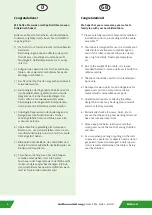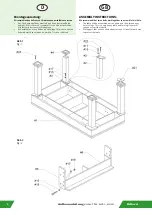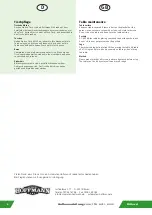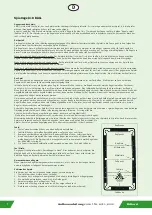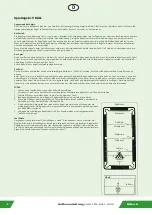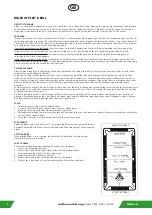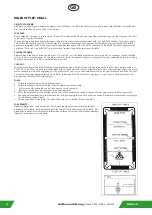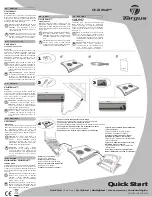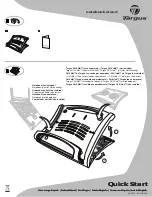
Billard
Aufbauanleitung
zu Art.Nr. 6011, 6012
10
GB
RULES OF PLAY: 9 BALL
OBJECT OF THE GAME:
Nine-Ball is a popular game enjoyed by players of all skill levels. In 9 Ball, the shooter must make contact with the lowest numbered ball
fi rst. The player who sinks the 9 ball is the winner.
THE BREAK:
Balls numbered 1 through 9 are racked in a “diamond” shape with the 1 Ball at the top of the diamond and on the foot spot and the 9 Ball
in the center. See the illustration.
The cue ball must be placed behind the head string and the shooter must make contact with the 1 Ball fi rst andeither: (a) pockets a ball,
or (b) drives four balls to the rails. If the shooter fails to make a legal break, the opponent has the option of accepting the balls in this
position or re-racking the balls and shooting the opening break again. If the cue ball is scratched on the break, the incoming player may
not play a “Push Out” (see PUSH OUT), but places the “cue ball in hand” anywhere on the table.
PLAYING THE GAME:
Aft er the break, the next shot may be played as a “Push Out”, or, if the breaker pockets one or more balls, he continues to shoot until he
misses, fouls, or wins the game. Once a player misses or fouls, the opponent begins to shoot until missing, committing a foul, or winning.
The game ends when the 9 Ball is pocketed on a legal shot.
PUSH OUT:
The player shooting immediately following a legal break may play a Push Out in an attempt to move the cue ball into a better position. In
a Push Out, a ball does not have to make contact with any ball or rail and is not considered a foul unless other foul rules apply. The player
must announce the intention of playing a Push Out before the shot, or it is considered normal play. Any ball pocketed on a Push Out does
not count and remains pocketed (except the 9 Ball). Following a Push Out, the incoming player: a) must shoot from that position or b)
may pass the shot back to the other player.
FOULS:
1. Failure to execute a legal shot as defined above.
2. Failure to make first contact with the lowest numbered ball on the table.
3. A scratch shot (shooting the cue ball into a pocket or off the table)
4. Moving or touching any ball by means other than legal play.
5. When the object ball is not pocketed, failure to drive the any ball to a rail aft er the cue ball has made contact with the object ball.
6. Shooting an intentional jump shot over another ball by scooping the cue stick under the cue ball. A jump shot executed by striking the
cue ball above center is legal.
7. Driving any ball off of the table. The object balls are not re-spotted (except the 9 Ball).
FOUL PENALTY:
Opposing player gets “cue ball in hand”. This means that the player can place the cue ball
anywhere on the table. Balls pocketed on the foul are NOT re-spotted (except the 9 Ball). Any
player that commits a foul three consecutive times on three successive shots without making a
legal shot in between loses the game.


